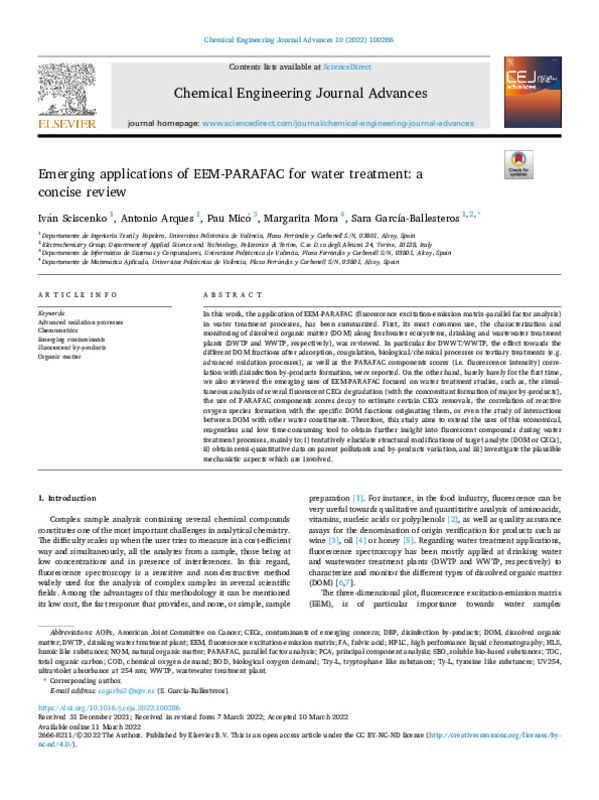JavaScript is disabled for your browser. Some features of this site may not work without it.
Buscar en RiuNet
Listar
Mi cuenta
Estadísticas
Ayuda RiuNet
Admin. UPV
Emerging applications of EEM-PARAFAC for water treatment: a concise review
Mostrar el registro completo del ítem
Sciscenko, I.; Arqués Sanz, A.; Micó Tormos, P.; Mora Carbonell, M.; García-Ballesteros, S. (2022). Emerging applications of EEM-PARAFAC for water treatment: a concise review. Chemical Engineering Journal Advances. 10:1-7. https://doi.org/10.1016/j.ceja.2022.100286
Por favor, use este identificador para citar o enlazar este ítem: http://hdl.handle.net/10251/195608
Ficheros en el ítem
Metadatos del ítem
| Título: | Emerging applications of EEM-PARAFAC for water treatment: a concise review | |
| Autor: | ||
| Entidad UPV: |
|
|
| Fecha difusión: |
|
|
| Resumen: |
[EN] In this work, the application of EEM-PARAFAC (fluorescence excitation-emission matrix-parallel factor analysis) in water treatment processes, has been summarized. First, its most common use, the characterization and ...[+]
|
|
| Palabras clave: |
|
|
| Derechos de uso: | Reconocimiento - No comercial - Sin obra derivada (by-nc-nd) | |
| Fuente: |
|
|
| DOI: |
|
|
| Editorial: |
|
|
| Versión del editor: | https://doi.org/10.1016/j.ceja.2022.100286 | |
| Código del Proyecto: |
|
|
| Agradecimientos: |
This work is part of a project that has received funding from the
European Union's Horizon 2020 research and innovation programme
under the Marie Sklodowska-Curie grant agreement No. 765860
(AQUAlity). The paper reflects ...[+]
|
|
| Tipo: |
|









